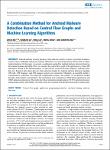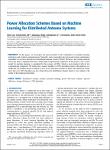BBAuthors: Liu, H.; Advisor: -; Participants: Liu, Z.; Liu, S.; Liu, Y.; Bin, J.; Shi, F.; Dong, H. (2019)
The integrity of geomagnetic data is a critical factor in understanding the evolutionary process of Earth’s
magnetic field, as it provides useful information for near-surface exploration, unexploded explosive ordnance detection, and so on. Aimed to reconstruct undersampled geomagnetic data, this paper presents a geomagnetic data reconstruction approach based on machine learning techniques. The traditional linear interpolation approaches are prone to time inefficiency and high labor cost, while the proposed approach has a significant
improvement. In this paper, three classic machine learning models, support vector machine, random forests, and gradient boosting were built. Besides, a deep learning algorithm, recurrent neural network, was explored to further improve the training perform... 



